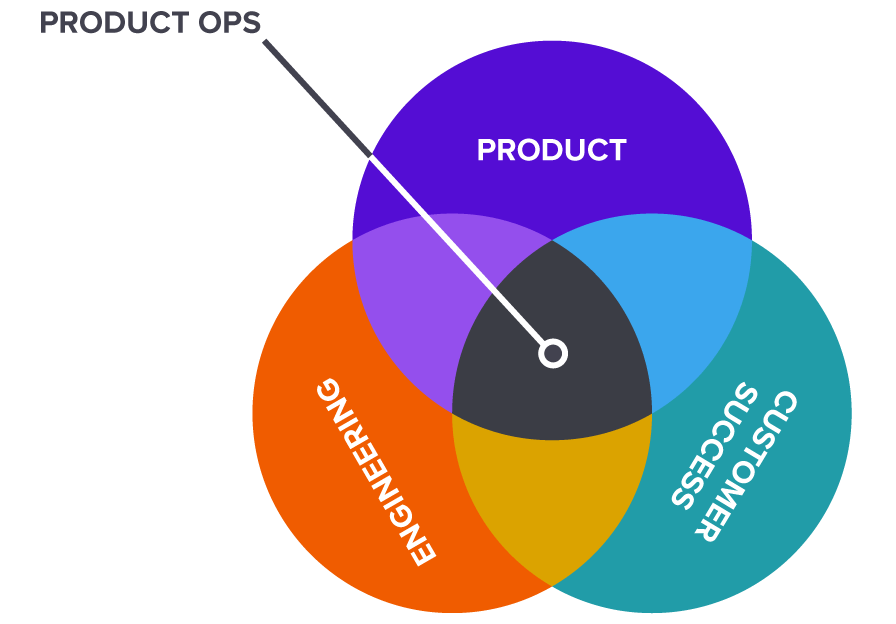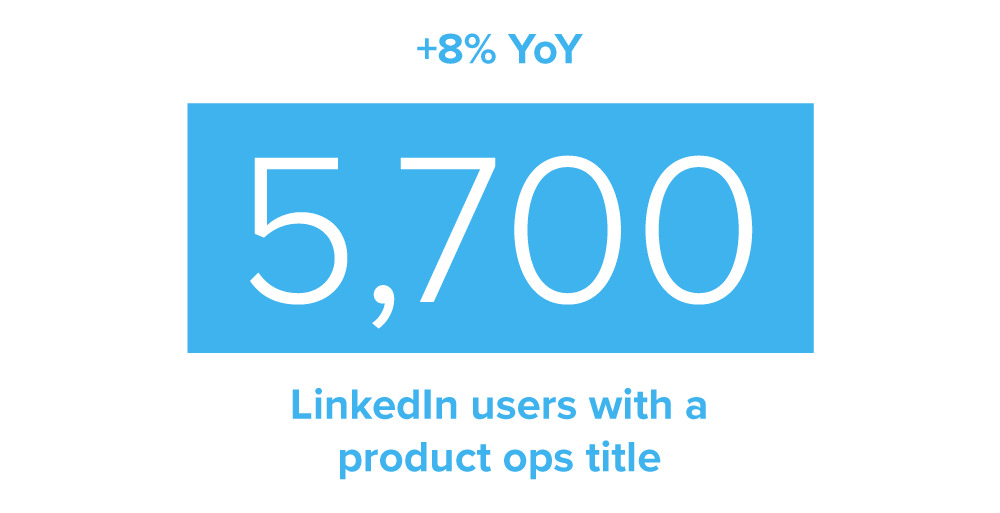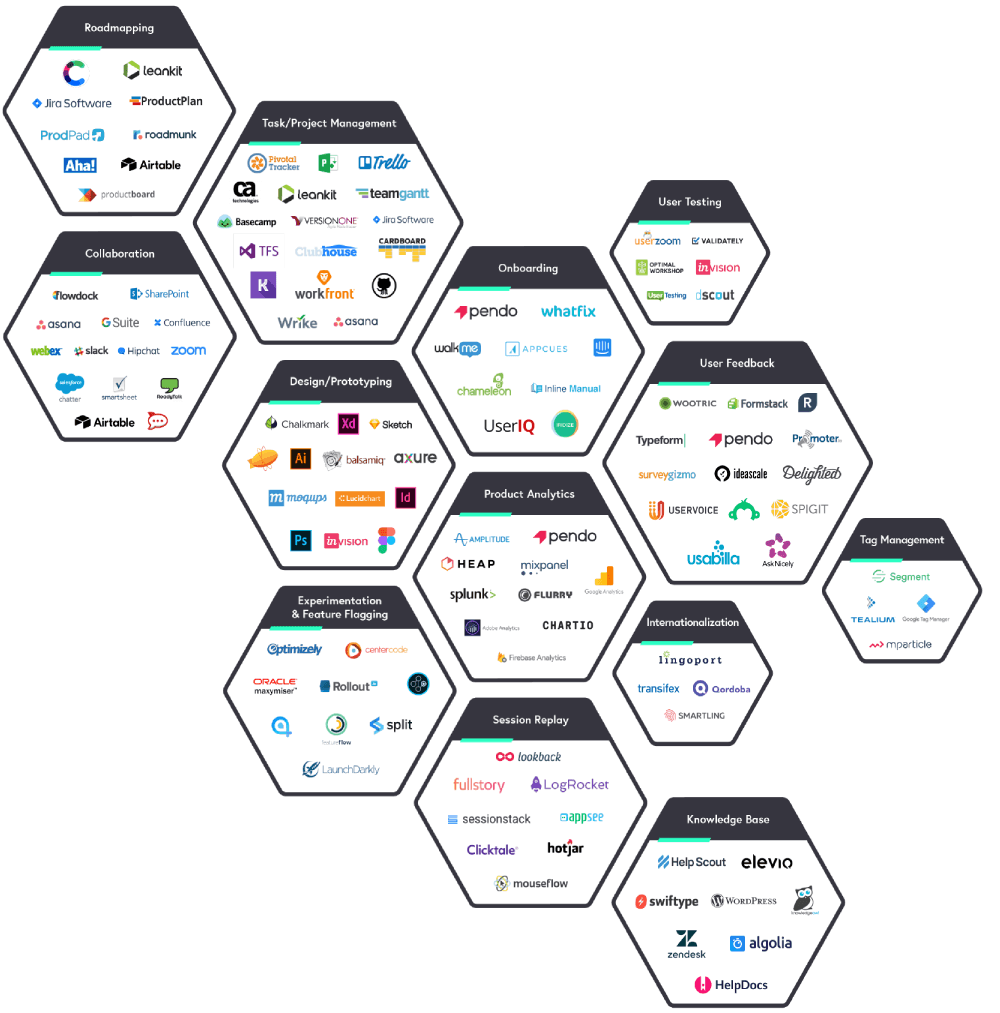
はじめに
Product operations (product ops) isn’t necessarily new, but it isn’t exactly commonplace, either. For technology companies that are scaling, it can be the difference between successful growth and growing pains. It’s simultaneously novel (applying the ruthless efficiency of sales operations to the R&D function) and familiar (what successful company doesn’t have an ops function?).
You don’t hear about product ops as often as you hear about marketing operations (marketing ops), sales operations (sales ops), or their amalgam revenue operations (RevOps). Even development operations (DevOps) is prevalent throughout tech. But we think this could change, and product ops could soon find itself on equal footing with its popular predecessors.
To better understand the state of product ops, what the role entails, why it matters, and where it’s going, we partnered with Product Collective to interview professionals from the field, whether they perform the function themselves or work at companies with a product ops department.
The biggest takeaway? This is a critical time for product ops. And the sooner companies start to recognize this, the better for them.
プロダクトオペレーションとは
At its core, product ops is the intersection of product (including product design), engineering, and customer success (CS). It exists to support the R&D team and their go-to-market counterparts to improve alignment, communication, and processes around product development, launch, and iteration.

But every company defines product ops differently, likely due to the novelty of the role, and the fact that every team, product, and business has unique needs.
Product ops’ specific responsibilities can also look very different at different organizations, depending on what’s most important for the business. Consider these three different models for product ops:
Outcomes-driven
At Uber, product ops is responsible for gathering insights and scoping out the business needs at the very beginning of the product development process (which often includes going out and talking to users), as well as at launch time, working with their ops counterparts around the world to execute launches and go-to-market strategy.
Please fill out the form below to read the rest of this e-book.
Efficiency-focused
At Stripe, product ops exists to deliver more value to more users faster, and has three areas of focus: strengthening product feedback loops, operationalizing products, and scaling product knowledge across the organization.
Customer-centric
When Theresa Baker started in product ops at Comcast for their Digital Home product, her role was more of a customer experience function that provided insight into the end-to-end customer experience through a product lens.
Where does product ops fit in an organization?
If it’s a defined role, product ops typically sits in the product management team or in an adjacent function that also reports up to the head of product.

I see product ops reporting to the head of product management, and existing as a shared resource across the product management organization.
Robert Hatta /// Talent Partner, Drive Capital

When I think about product ops, it’s the role itself — which for us is the product operations manager — but it’s also the team of product ops people that are connected with each other. By working together, it allows us to drive a lot of really interesting and impactful initiatives across the entire company.
Blake Samic /// Head of Product Operations, Stripe
The shadow product operative
Some may think of product ops as strictly a role that companies hire for. Others may view it as a skillset that any product professional can (and should) hone. We see it as both — product-led organizations should designate someone to be responsible for product ops, but, at the same time, all members of the product team should develop an operational mindset.
According to LinkedIn, product operations is related to a sprawling set of roles, including growth product manager, product development associate, business operations analyst, product manager, and customer impact manager all appearing as results, in addition to product operations manager and analyst. The dust appears to still be settling.

There are nearly 5,700 LinkedIn users with a product operations title — an increase of 8% in the last year alone. But even more noteworthy is that product operations as a skill on LinkedIn is up 80% year over year. The dust may be settling, but there certainly is a lot of it.

Mr. Hatta summarized the state of product operations well when he said, “There’s clearly a need for this function, and it’s probably a need that a lot of companies who have scaled successfully have solved for, but they might just be calling it a variety of different things.”
What can we learn from this? Although the product operations title isn’t as concentrated as other ops roles, product professionals recognize that ops is on the rise, and are starting to position themselves for the role. The next question is … why now?
Why is product ops on the rise, and why now?
We believe product ops is on the rise for a few reasons: heightened expectations on the customer experience, the rise in ops roles in general, the growing availability of product usage data, and, most notably, the enormous advantage product-led companies have over their competition. Studies have found product-led companies’ profit margin exceeds peers by upwards of 527 percent — and product-led companies are disproportionately likely to employ a product ops leader or even an entire team.

I think that product ops is definitely growing in importance, especially in the sense that tech companies are growing faster now. From my perspective, it’s not that product ops hasn’t been important in the past, but that companies haven’t come to the conclusion that it makes sense to group these responsibilities into one role or team, and that it’s actually more efficient that way.
Blake Samic /// Head of Product Operations, Stripe
The evolution of the product experience
For product-led companies, the product isn’t just part of the customer experience — it is the experience. From trial and purchase all the way through onboarding, expansion, and referrals, product becomes the vehicle for all of those stages. And product ops is central to the optimization of that experience, especially as the product development lifecycle continues to evolve.
In the past, product managers struggled with projects taking way too long (or worse: not being completed at all) and coming in over budget. This notion gave rise to the agile method, enabling product teams to ship projects on time using shorter sprints to continuously iterate. Then the question arose: how do we get this in our customers’ hands faster? The formation of DevOps eliminated this friction and companies were able to release products more often — shipping products weekly, or even daily, with a single press of a button.
Which brings us to now. As teams build and release more, how do they know if they’re building the right things? And how do they ensure users know about everything they’re building? That’s where we see product ops coming in: optimizing the product development process and the customer experience to ensure users get value from the product, and internal teams are educated and enabled to do their jobs efficiently.
The “other ops”
In the last five years alone, there has been a growing conversation around the importance of operations functions. Regardless of which team they serve, the reason for an ops function usually boils down to three key outcomes: better visibility and collaboration, increased efficiency, and more output.
Since we see product ops as the latest addition, it’s helpful to think about the ops roles that are already widespread and accepted:
Jeff Bussgang, a VC who wrote a post on how sales operations is the secret to scaling for startups, captures the rise in ops roles perfectly: “As companies stabilize their business models and find product-market fit, they begin to adjust from a hunch-driven operating model, where decisions are made by the founders in large part on gut instinct, to a metrics-driven model, where decisions are made by professional managers based on data.”
The rise of data
With more data available than ever before, we’re in the middle of what some are calling the “datafication” of everything. Tech organizations are realizing that using data to drive business decisions is no longer a reach goal, but a must do — making an operational function critical to analyzing data and turning it into actionable insights.
And since product data is the cleanest data in any organization (there’s no opportunity for it to get altered by human-input error or messy append services), it can be even more impactful for the business. Gartner predicts that by 2021, 75% of software providers will rely on insights from embedded software analytics to inform product decisions and measure customer health.

With today’s market conditions and the sheer availability and rise in popularity of data — I really think there’s a correlation there with the rise in product ops.
Shelly Perry /// Operating Partner, Insight Partners

Now, we’re past that hurdle of ‘I can’t get data out of my system,’ and we have so much data in all different places — and I think product ops is about pulling it all together to synthesize that data and turn it into insights.
Melissa Perri /// Founder, Produx Labs
The product ops role
We’ve identified five core areas of the product ops role. They include:
1. Tools
The product ops role Ops pros tend to take ownership of tool selection, integration,
and maintenance of their team’s tech stack. And product ops is no different.
MANAGE THE PRODUCT TECH STACK
Product ops owns the product team’s tech stack, manages relationships with vendors, and administers these tools to the wider team. Here’s a visualization of many of the tools (and vendors) used by product managers today:
Source: ProductCraft
ESTABLISH BEST PRACTICES INTERNALLY
Product ops is also responsible for technology selection, establishing best practices for usage, and ensuring team members are using their tools effectively.
2. Data
With this increase in tools comes a corresponding increase in the amount of available data. The challenge is surfacing, organizing, and analyzing that data in a thoughtful way.

Product ops is about helping people better understand the power of the combination of multiple data sources — that’s what drives the business forward. One by itself isn’t enough.
Shelly Perry /// Operating Partner, Insight Partners

To me, product ops is all about
answering the question ‘How do we get product data into the process for making product strategy decisions?’
Melissa Perri /// Founder, Produx Labs
MAINTAIN DATA INTEGRITY, CLEANLINESS, AND ORGANIZATION
For a data-driven product strategy to be effective, there needs to be a strong foundation put in place so that the data is accurate, easy to understand, and useful. Putting a single person or team in charge of this helps eliminate problems like data duplication, or product managers not knowing where to go for certain information.
Melissa Perri explained this well with an example, “In an ideal world, a product manager should be able to log into some sort of system, ask a question and get the answer if that data is available, or be able to request the data from product ops.”
Product ops might also partner with product managers to set up the measurement and reporting structure for product releases, and then make sure that data is fed into the right places.
PERFORM DATA ANALYSIS
Product ops not only plays a critical role in collecting data, but also in using it to surface insights that will inform product decisions. One example of this could be reconciling usage data with customer feedback, whether it’s passed along through customer success and sales team members or submitted by the users directly to the product team.

It’s not the usage data by itself. It’s the usage data, plus the financials, the movement in the market, your win-loss areas, what’s coming in from support, what your competitors are doing. […] It’s this massive correlation of the data that actually makes a difference — it’s not just about the one data source you might already have in front of you alone.
Shelly Perry /// Operating Partner, Insight Partners

If you’re a product leader entering a planning
cycle, you should be looking at things like usage data, but you also want to look at what has been submitted by your users — the pain points they’ve mentioned in support tickets, or through your sales team and account managers. You need to have good systems in place to capture all of that information, structure it, organize it, and tag it, so you can then surface it at the right times in really high impact ways.
Blake Samic /// Head of Product Operations, Stripe
PROVIDE DATA TO NECESSARY STAKEHOLDERS
Of course the value of this data hinges on it reaching the right people at the right time. Product ops needs to set up effective workflows and cadences for delivering this information (and avoid just fielding one-off requests) — for example, supplying product usage data to customer success, allowing them to pre-identify at-risk accounts.
What kinds of data does product ops care about?
- Product stickiness (DAU/MAU ratio, WAU/MAU ratio)
- Product usage data
- Breadth (e.g. number of active users for a given customer)
- Depth (e.g. feature usage)
- Frequency (e.g. number of logins for a given customer)
- Feature adoption rates
- Feature retention rates
- NPS
- Leading indicators of conversion, renewal, and expansion
- Top feature requests
- Product delivery predictability
- Product bugs (e.g. broken down by feature and product usage)
- Product performance
- Support tickets
- 顧客からのフィードバック
- User research data
- Win/loss analysis
- Churn data
- Cost data
- Revenue data
3. Experimentation
According to Robert Hatta, one of the biggest benefits of having a defined product ops role is eliminating friction in the experimentation process, which allows product teams to run more experiments. For an organization looking to scale, this is essential.

Think of product ops as two roles at an airport: running launch logistics on the ground to make sure all the planes are taking off in the most efficient way possible, and performing air traffic control to make sure the planes aren’t all running into each other once they’re in the air.
Robert Hatta /// Talent Partner, Drive Capital
KEEP TRACK OF ALL EXPERIMENTS
At the most basic level, product ops should keep track of every active experiment, and make sure they aren’t overlapping or interfering with each other. Having this single source of truth is also beneficial for the broader team, since it acts as a resource that they can refer to at any time.
STREAMLINE SEQUENCING AND IMPLEMENTATION OF EXPERIMENTS
Product ops should also be creating processes to help make experimentation more efficient, for example by establishing workflows, putting together documentation, segmenting user populations, and making sure the data you’re getting back is clean and accurate.
In an article for First Round Capital, the co-founders of Reddit note that their product ops team is also responsible for making sure every experiment aligns with larger company goals.
4. Strategy
Processes will differ depending on how teams are structured, but it’s imperative for product ops to align with other teams across the company, and be the inter-departmental link that drives collaboration around the product. By providing product insights, product ops works with other teams to identify areas for improvement and inform business decisions.
PARTNER WITH OTHER TEAMS ACROSS THE COMPANY
Product ops is a key partner for teams like RevOps, DevOps, CS, marketing, sales, and of course, the wider product team. These relationships will vary by company, but here’s what it could look like:
- Aligning with RevOps to ensure product data is incorporated into business health metrics, especially with respect to trial conversions, renewals, and expansions.
- Partnering with DevOps to advise on roadmapping, based on data and feedback from the field.
- Working with marketing to hone persona definitions, ensuring the leads generated match the characteristics of the company’s most successful users.
- Monitoring customer feedback channels and then feeding that information back to the CS team and product owners.
- Defining performance experience metrics in partnership with the quality assurance team to better measure success around the product experience.
SCALE PRODUCT KNOWLEDGE
Since they are in sync with teams across the company, product ops becomes the best resource for things like product information, new learnings, and the state of the roadmap — and they should be proactive about sharing these insights.
Product ops can be expected to answer:
- What are the top priorities across all product teams?
- Where does X fall on the product roadmap?
- What are the top X needs from Y customers?
- What are the top X at-risk customers?
- Where is the discovery/feature/release brief for X feature?
5. Trusted advisor
As companies scale, there’s a need for leadership to have enough information to make decisions, especially when it comes to decisions about the product. The product ops team (or person) is a key advisor for CPOs, VPs of product, and other R&D leadership of the like — for example, by using data to advise on the roadmap or supplying product health data to the executive team.
How does product ops impact the rest of the company?
One of the biggest impacts product ops can make is taking administrative and organizational tasks off product managers, so they can focus on improving the product. With this comes some more specific effects, which we’ve outlined below.

Product ops needs to be able to get leadership
the data that they need to make product decisions, not just the data they ask for.
Melissa Perri /// Founder, Produx Labs
Shifts in ownership
When a product ops function is introduced, expect a natural shift in responsibilities since the diffuse, ops-y projects product managers took on in the past will now be consolidated into one person or group.
Here are a few examples of what might shift to product ops:
- Gathering and organizing data: product ops becomes the keeper of all product data, including collecting it from multiple sources and sharing it with the right people
- Running experimentation processes: this takes the burden (and intricacies) of things like managing experiment schedules and segmenting users off of product managers
- Collecting customer feedback: by delegating this to a single person or team, it helps keep the feedback collection process consistent and scalable
- Training and enablement: product ops can use their product expertise to train sales and CS teams on any new products or updates

Traditionally, product managers were responsible for finding data from each part of the organization on their own. I see product ops taking over that entire process.
Melissa Perri /// Founder, Produx Labs
Cross-team communication
Since product ops serves as the product expert for other teams across the company, those communication channels are clearly defined and in an ideal world, everyone knows how and where to get the information they need.
In addition to better-defined communication channels, product ops also serves as a single source of product expertise, which improves communication around the product itself.
Increased efficiency
A natural result of better communication is greater efficiency: when people know where to go for information and can find what they need more quickly, they become more efficient. And when product managers and product owners aren’t tasked with things like creating sales materials for new features or reporting on product metrics, they can build and release more, and do so at a faster pace.
Connecting product to the bottom line
With product ops in place, organizations are better able to connect product decisions with their overall business strategy.
Within the Digital Home product team at Comcast, the ops team helps identify ways to drive key business objectives which positively impact the bottom line. For example, they help define product enhancements to address customer issues that may be driving support calls or technician visits, as well as identify enhancements to frontline tools for more efficient troubleshooting, resulting in operational savings for the business.

Theresa Baker /// Senior Director, Product Management, Comcast
Traditionally the ops function has lived
outside of the product team. Having a dedicated focus embedded within the Digital Home product organization has allowed closer partnerships to be built to help ensure critical elements of go-to-market success (i.e. support tools, communications, and training) are complementary and reflective of the full product experience.
The way I like to describe it is that we kind of ran interference for the product owners. We allowed them to focus on what they truly were responsible for, which was defining the product and advancing the roadmap, rather than getting pulled into operational tasks and projects related to bringing the product to market.
What does the future look like for product ops?
Product ops is simultaneously an emerging role, and one that has been around for decades
in one form or another. So, what’s on the horizon for product ops?
It was clear that product ops is on the rise:

As more organizations turn to a data-driven approach — which every company should be doing— I think we’re going to see this role become an absolute critical component of any company that has a technology team.
Melissa Perri /// Founder, Produx Labs

I think we’ll start to see more and more people specializing in product ops, even at the college level. There’s so much opportunity there, since product is becoming increasingly important for topline business metrics, and is now viewed as a revenue-producing function.
Shelly Perry /// Operating Partner, Insight Partners

Just like the market for sales ops tools is a lot more mature than it was ten years ago, I think
the number of tools available for product ops people will grow. Every layer of the sales funnel has a best-in-class tool, and I can see that start to develop within product as well.
Robert Hatta /// Talent Partner, Drive Capital
But also that the role is in for some changes:

I think the full end-to-end product ops function will come about by the merging of two teams: the team that focuses on product analytics and user analytics — which I’ve seen more and more through roles like “product analyst” — and the more traditional product ops team that does things like insights gathering, requirements process, and execution of the go-tomarket strategy. And my expectation is a lot more of these types of teams will merge in the future.
Matt Shroder /// Head of Product Operations, Uber

I see product ops becoming more of a strategic role within product teams. A lot of companies try to set up their tech organization in a way that almost feels like a bunch of different startups. These teams typically have a product leader, an engineering leader, and I see the product operations manager role becoming the ops leader, almost like a mini COO.
Blake Samic /// Head of Product Operations, Stripe
And there was also a notion that product ops still has a ways to go:

I wouldn’t say tech companies have fully embraced product ops, but I think they’re starting to embrace certain facets of the role. The word ‘ops’ also has a little bit of a dull connotation to it, so I don’t know if it’s going to be called product ops or something fancier, but I think we’re going to see the role in different forms and names — whatever makes it look and feel like this is a really important function that’s moving the business forward.
Varun Ramamurthy Dinakur /// Founder & CEO, Hansel.io

I think the definition of product ops can be evolved to encompass a broader focus on the customer experience. At the end of the day, we’re doing everything in service of the customer, so there has to be that end-to-end customer experience lens to approach all of the elements of the role.
Theresa Baker /// Senior Director, Product Management, Comcast
Advice for getting started with product ops
It wouldn’t be right to collect all of this information about product ops without sharing these experts’ firsthand advice for launching (or improving) a product ops function.
What makes for a successful product ops person?
If you’re thinking about hiring a product ops person (or team), think of these as the characteristics to look for. And if you’re wondering if you may be a product ops practitioner in hiding, use this list to self assess to see if you’re a good fit for the role.
1. Analytical/data-oriented
Product ops people need to be pros at taking data and turning it into insights, as well as analyzing information from multiple data sources and being able to identify what is the most impactful.
2. Comfortable with systems
Product ops people should be good at understanding and using (which often includes learning) a variety of tools in their day-to-day.
3. Collaborative
Collaboration was another top skill mentioned across many of our interviews. Or as Blake Samic puts it, the ability to be a “collaboration catalyst”: someone who can be put into a group of people and make the whole group more collaborative.
4. Great communicators
This includes written, verbal, and in-person presentations. The product ops role is going to be relaying information to many different teams, all the time. Melissa Perri said product ops also needs to be especially good at collecting information and presenting it in new ways.
5. Entrepreneurial
We also heard things like action-oriented and able to structure something that’s ambiguous. Matt Shroder noted that product ops people need to be comfortable with ambiguity in general.
6. Business acumen
Since product ops aims to connect the product with a company’s business priorities, sound business judgement is an important foundational skill to look for.
7. Product-oriented
Product ops people don’t necessarily have to have a product management background, but they should have a general understanding of what a product team does (and able to learn the ins and outs of your product quickly).
8. Leadership
Not every product ops role will have direct reports, but they need to have a scaled impact across different functions of the business, which requires them to be leaders in their own right.
How to get started
Wondering where to start? Here’s what some of our interviewees suggested:

Like with all things, if you make it too big at the very beginning and set up too many expectations, you run the risk of failing in an equally big way. My advice would be to start small, show some results, and it will catch on.
Shelly Perry /// Operating Partner, Insight Partners

I think you should start thinking about product ops when you’re still small, so that you can orient yourself towards scaling well. You don’t want to be a company of 500 people and not have the right processes in place.
Melissa Perri /// Founder, Produx Labs

I think you could have a scaled down version of product ops even at a very small company. In that case, you might have more of a centralized group that’s thinking about these things rather than the embedded role within the product organization.
Blake Samic /// Head of Product Operations, Stripe

